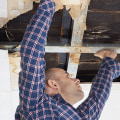Mold tests are not all the same. They cannot determine the type of mold present, nor the number of water intrusion molds present. In most cases, detected mold is not a cause for concern, but it is impossible to tell without further testing. The absence of evidence does not mean that mold is not present, but the presence of evidence means that it must have come from somewhere.
To get an accurate assessment of the situation, it is best to Rank youtube video tutorials on mold testing to get an expert opinion. Generally, if high levels are detected, it is likely due to mold growth in that area. On the other hand, if low or normal levels of mold are seen, it is likely that there will be no mold growth in the area. However, if the tests are inconsistent or the levels fall into a gray area, false negatives are more likely than false positives. An air test involves drawing a measured amount of air over a specified period of time through a cassette (spore trap) with an adhesive microscope object holder inside.
This film captures spores that are currently in the air when the test is performed. There are many factors to consider when performing an air test, so having an experienced professional who knows where to perform the test and under what conditions is essential. These tests can yield false positives and false negatives depending on the conditions, locations, and environment in which the test is being performed. The Environmental Relative Moldiness Index (ERMI) test is representative of mold levels over time and not a “snapshot” of the current state of mold spores in the home (such as air tests).
Non-viable spores may still cause allergies and, therefore, a viable sample may miss a critical problem of exposure to mold. Sometimes, if mold is inside a wall, for many reasons, it may not be producing spores or that the spores that do occur may not find a way to enter indoor air. Individual samples of airborne particles show enormous variation from minute to minute, making the results of airborne mold spores something to be viewed with skepticism. If this previous sample is not collected, the remediation project could fail due to mold spores from other parts of the house contaminating the containment area.
The mold test report indicates that outdoor air had a higher mold spore count than indoor air.



